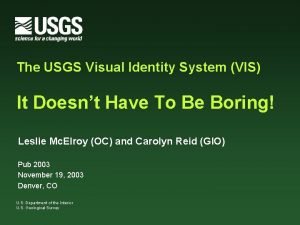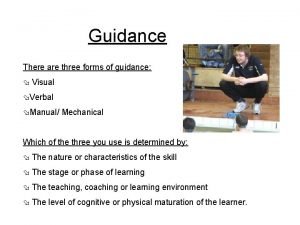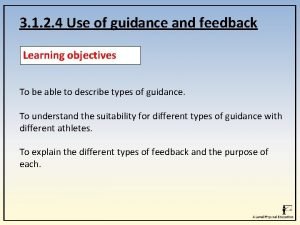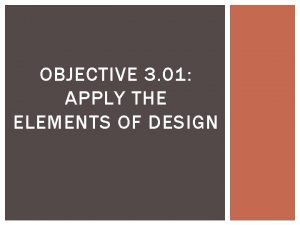Guidance There are three forms of guidance Visual







- Slides: 7

Guidance There are three forms of guidance: Visual Verbal Manual/ Mechanical Which of the three you use is determined by: The nature or characteristics of the skill The stage or phase of learning The teaching, coaching or learning environment The level of cognitive or physical maturation of the learner.

Visual guidance can be shown in various ways • Demonstrations • Still images • Moving images – video - slow motion

Key points for successful use of visual guidance Ensure the demonstration is accurate Draw the learners attention to key points Ensure the learner can see essential parts Ensure the demonstration seems attainable. Visual guidance may be combined with verbal for more advanced learners Visual guidance allows time for mental rehersal.

Verbal guidance • Often used with visual guidance when a coach needs to describe an action. • It is used when giving verbal cues. • Draws the learners attention to specific elements of the skill. • Can be used as a ‘trigger’ for certain movements. E. g. push your hips forward now.

Key points for successful use of verbal guidance Most often used in conjunction with visual guidance. It is useful when drawing the learners attention to important elements of the movement. Keep it brief Can be used during a movement Description must be clear and precise Consider the complexity of the skill. Is it best to keep quiet and just demonstrate.

Manual or mechanical guidance • Manual/ mechanical guidance involves either physically moving the limb or body of the learner into the correct position or by physically restricting their movement so that only the correct movement can be achieved. • Often use when the skill requires an element of risk.

Key points for successful use of manual/mechanical guidance Can give the kinaesthetic feel for the movement. Useful for individuals but not groups. Helpful at an early stage to allow the performer to attempt the whole movement in difficult or dangerous environments. Useful when correcting an element of a movement, particularly if the performer cannot correct the element themselves. Coaches and teachers must be aware of supporting appropriately especially with children and members of the opposite sex.












